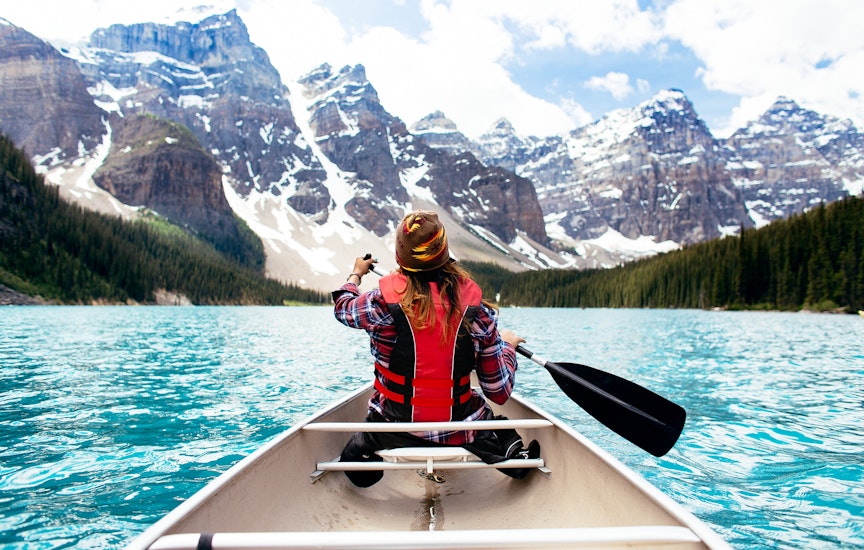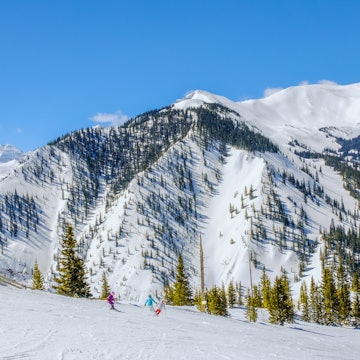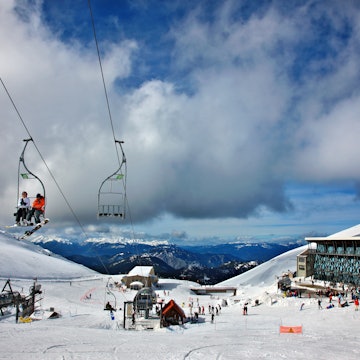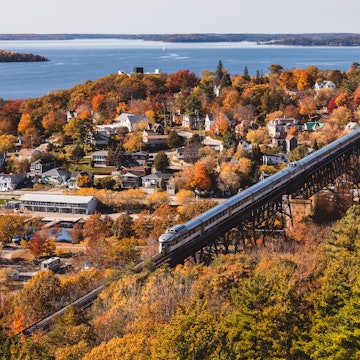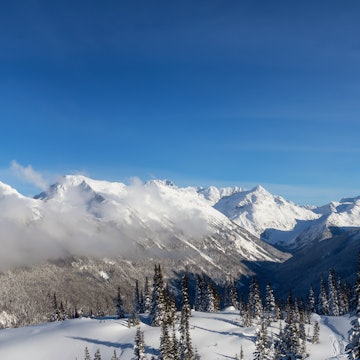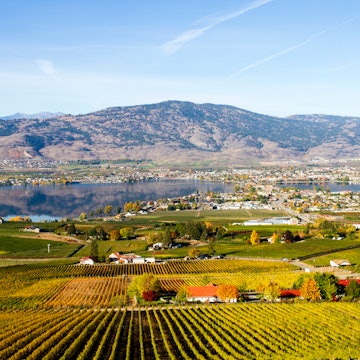

Whistler, British Columbia. Guy Fattal via Tourism Whistler
Whistler, rising from British Columbia's Coast Range, is crowned by snow eight months out of the year and is North America's largest ski resort. Yet this playground transforms with the seasons – skiing and snowboarding in winter, mountain biking and hiking in summer – anchored by a pedestrian-friendly village that hums year-round with West Coast soul. Located 120km north of Vancouver along the stunning Sea-to-Sky Highway , Whistler is an easily accessible mountain destination. The 2010 Winter Olympics left a legacy of world-class facilities, so you can ski in the morning and, come spring, golf in the afternoon, while the village evolves from a snowy ski paradise to a vibrant summer base camp for hiking, mountain biking and lake adventures.

When should I go to Whistler?
Skip the weekends if you can – Vancouverites and visitors from Washington flood the ski hills Friday through Sunday, turning lift lines into patience-testing marathons. Midweek visits mean shorter waits and easier restaurant reservations.
Late December through mid-March deliver Whistler's legendary powder days and the most reliable snow conditions. This is peak season, which means peak prices for everything from hotels to hot chocolate. Book accommodations months ahead and secure an Epic Day Pass or Epic Pass in advance for value and guaranteed ski access, especially during busy periods.
My favorite time is March: lower rates, fewer crowds, longer days and some of the best après-ski events of the year, but the lift lines are open into May. In the spring (April and May), you can carve turns in the morning and tee off at the golf course or hit the valley mountain bike trails in the afternoon.
Summer runs from June through September, transforming the resort into a postcard-perfect playground where glaciers crown the peaks while the valleys burst with verdant nature. It's prime time for hiking alpine meadows, bombing down bike trails and paddling crystal-clear lakes. Hillsides bloom with wildflowers, glacial-fed lakes are great to look at (though still are barely swimmable), and the village patios are packed until sunset.
For the best deals and smallest crowds, visit in September, when the weather holds steady but kids have returned to school. October brings stunning fall colors and crisp temperatures, though early snow can close high-alpine trails – a reminder that winter's never far away in Whistler.
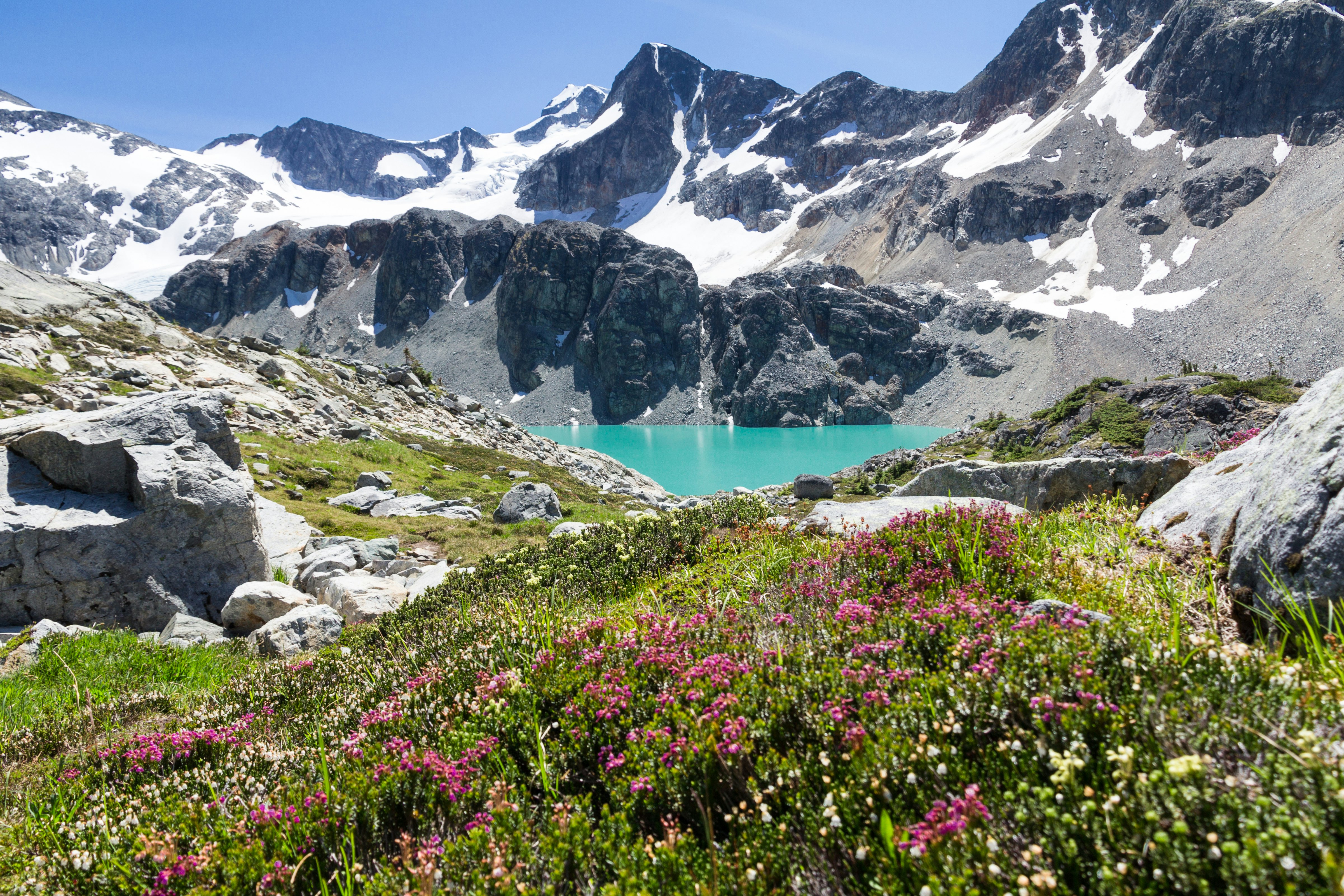
How much time should I spend in Whistler?
It depends on your fitness level and appetite for adventure. For skiers and snowboarders, three days on the mountain should be the minimum. That gives you enough time to explore both Whistler and Blackcomb peaks without feeling rushed, plus a buffer day for when your quads are screaming. Got deep pockets and even deeper powder dreams? Add a fourth day for Whistler Heli-Skiing – nothing says "I've made it" quite like being plopped on the top of a private mountain.
Summer visitors can squeeze an impressive amount of alpine activity into just a couple of days, thanks to those gloriously long northern days that stretch until 10pm. That's enough time to hike the High Note Trail, scare yourself silly on the bike park's double black diamonds and still squeeze in lake time at Alta or Lost Lakes.
Of course, if your idea of mountain adventure involves wandering the village with a latte, popping into boutiques and mastering the art of après-ski without the ski part, a day or two will scratch that itch nicely. Sometimes the best expedition is to a prime patio spot and watching everyone else work up a sweat.
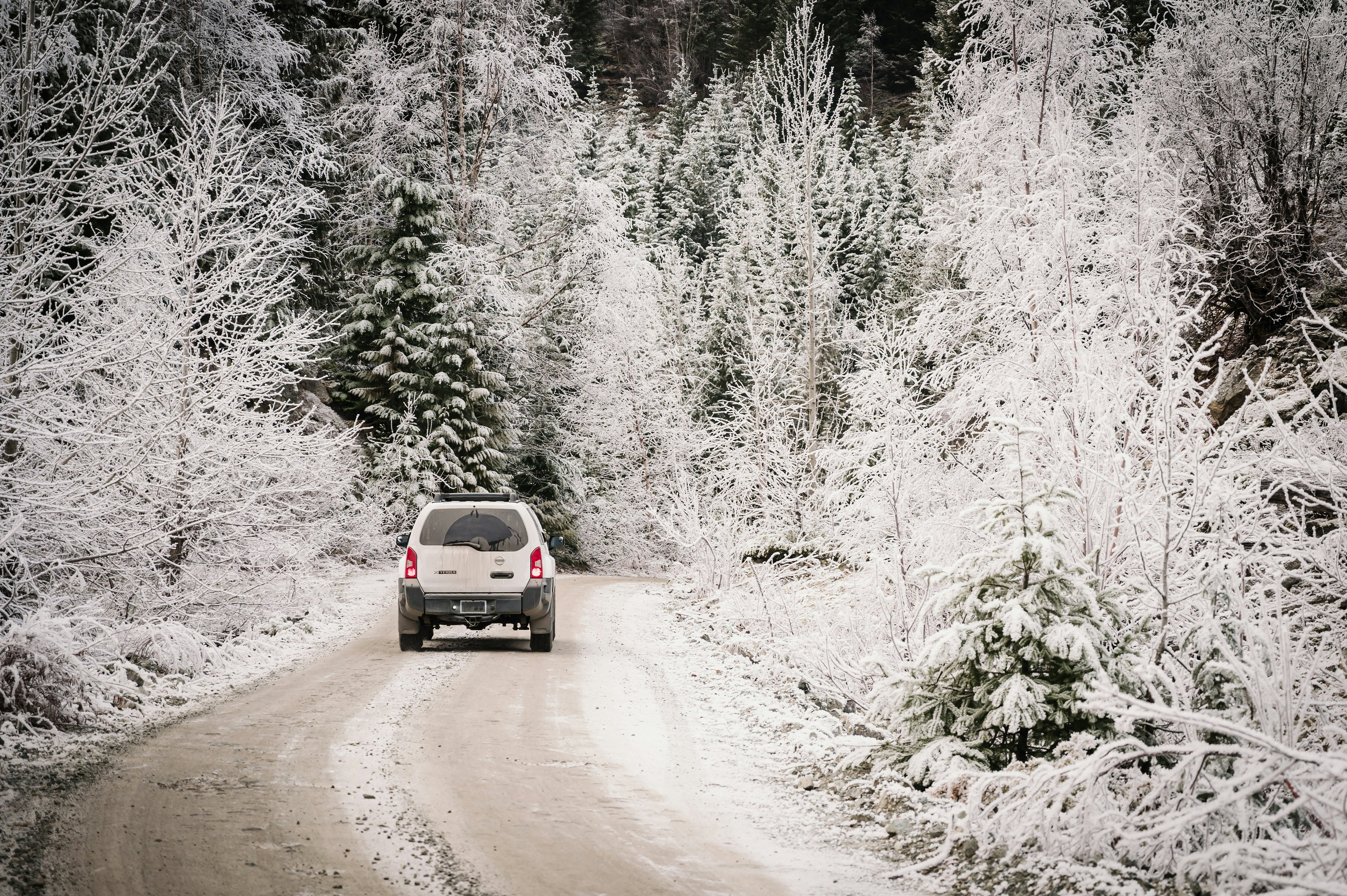
Is it easy to get in and around Whistler?
Getting to Whistler from Vancouver is straightforward – the scenic 2-hour drive along the Sea-to-Sky Highway ranks among North America's most spectacular road trips. In winter, 4WD vehicles are recommended, and mud-and-snow tires are mandatory. Vehicle rentals in Vancouver will come equipped with them (but if you’d like snow tires, you must request this ahead of time and pay extra). However, exploring Whistler without a vehicle is not only doable but also more cost-effective and easier. Multiple shuttle services connect Vancouver International Airport and downtown Vancouver directly to Whistler Village. For a splashy and scenic arrival, summer seaplane services from Victoria and Vancouver land right on Green Lake, weather and wallet permitting.
Whistler's pedestrian-only village puts everything within walking distance, and the local bus system fills in the gaps. Village shuttles run free year-round, while the entire transit system goes fare-free on summer weekends and holidays from Canada Day (July 1) through Labour Day (the first Monday in September). Routes connect the village to hiking trailheads, lakes and residential areas, running from early morning until 3am. The Umo app handles payment when fares apply, and there is also a tap to pay feature. With dedicated park shuttles to Lost Lake and Rainbow Park, plus secure bike parking throughout, getting around car-free is surprisingly easy.

Top things to do in Whistler
Tackle Whistler Blackcomb's legendary terrain
The 33 sq km of terrain at Whistler Blackcomb have hosted Olympics, broken records and humbled even the most ambitious powder hounds. For an elevated experience, Extremely Canadian offers private ski guiding – complete with lift line priority, secret powder stashes and insider tips to enhance your skills. Those seeking something extraordinary can ski alongside Olympic athletes, gaining expert technique insights and inspiration from champions. Eager skiers will love Dawn Patrol, which grants early-morning access to untouched slopes as the sun rises over the mountains.
Spa hard after skiing hard
Unwind at Whistler’s mountain-chic spas. The revamped Four Seasons Spa features luxurious treatments and products from an Indigenous-owned skin-care line. Nita Lake Lodge promises lakeside serenity and a cold plunge in the lake, while Scandinave Spa invites you for silent Nordic soaking and relaxation.
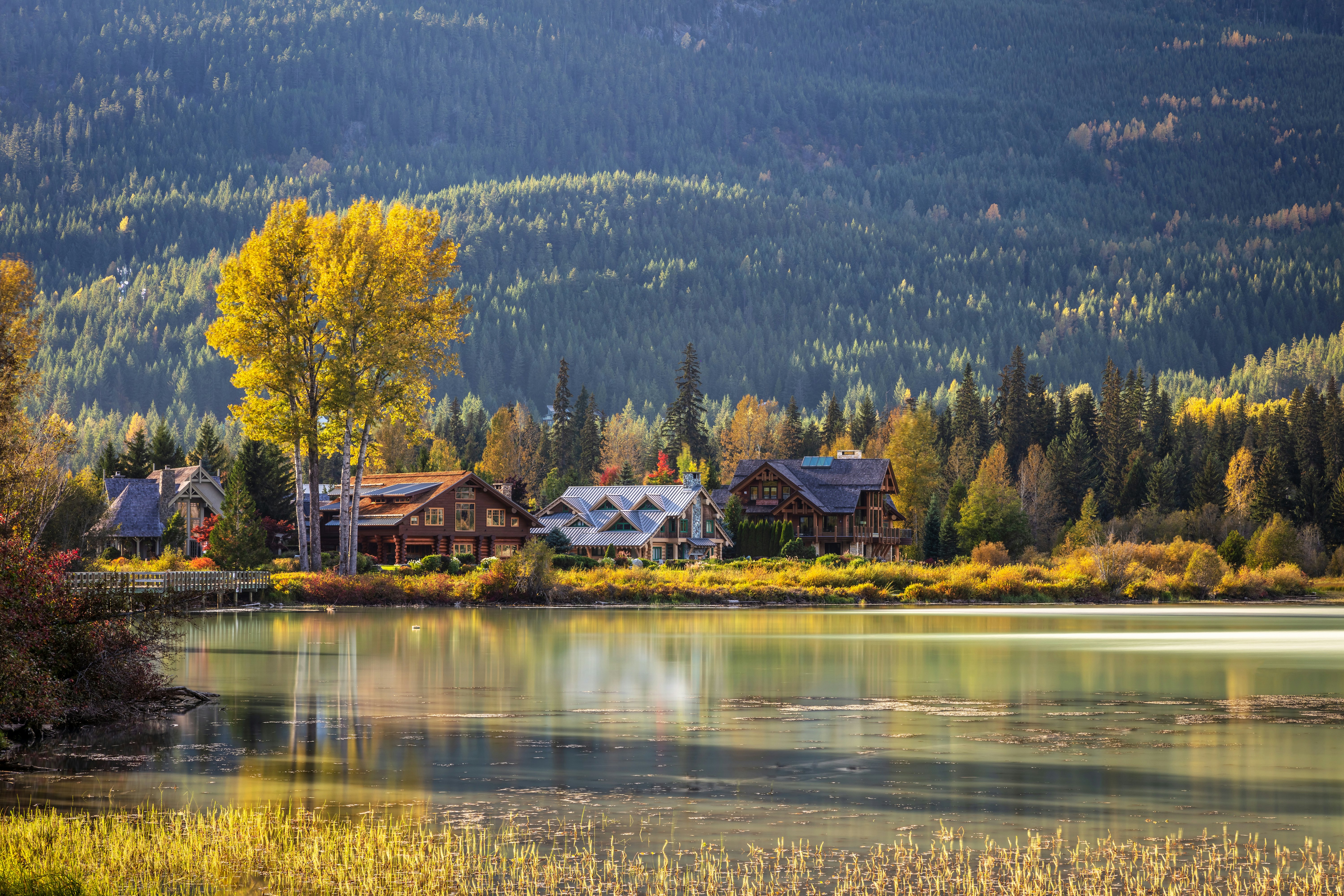
Paddle the River of Golden Dreams
This peaceful paddle from Alta Lake to Green Lake winds through wetlands with views of glacier-capped peaks, providing a completely different perspective on Whistler's landscape. Fair warning: while mostly mellow, a few technical spots can catch paddlers off guard. First-timers should consider a guided excursion.
Connect with Indigenous culture
To truly connect with Whistler’s sense of place, visit the Squamish Lil’wat Cultural Centre, where Indigenous stories, art and traditions of the Squamish and Lil’wat Nations come to life. The center's bistro serves Indigenous cuisine, local Indigenous guides lead immersive tours, and there are captivating drum ceremonies and opportunities to watch carvers at work. On the mountain, Raven's near the Creekside Gondola is an Indigenous-inspired restaurant run in partnership with the cultural center to bring authentic Indigenous cuisine and Indigenous-made wines to the slopes.

Hit the trails on two wheels
For mellow cross-country riding, the Valley Trail network connects lakes, parks and neighborhoods via more than 46km of paved paths – perfect for families or anyone wanting scenic pedaling without the adrenaline rush. A single dirt track loops around Lost Lake's old-growth forest with minimal elevation gain. For the hard core, over 80 trails descend from Whistler Mountain Bike Park using the ski lifts for the ascent.
Hit the trails on two feet
Summer transforms both Whistler and Blackcomb mountains into a hiker's paradise accessible by gondola. The Blackcomb gondola whisks you to easy alpine loops around pristine lakes and wildflower meadows, including the Instagram-famous Overlord Trail. Over on Whistler Mountain, the High Note Trail is a spectacular traverse that'll have you stopping every 5 minutes for photos. With over 50 trails, ranging from gentle 30-minute strolls to full-day epics into Garibaldi Provincial Park, hikers of every fitness level are satisfied. In the valley, the town and nearby, dozens of hiking trails can be accessed via bus, by car or on foot.
My favorite thing to do in Whistler
While both mountains offer incredible skiing, Blackcomb holds a special place in my powder-hound heart, and my favorite thing to do is undoubtedly to ski it on a powder day. The steep and deep terrain, old-growth tree glades, the haunting Burnt Tree runs and the infamous Spanky's Ladder – a bootpack hike that rewards you with access to multiple bowls of untouched snow – make this the mountain for serious skiers. In the summer, the River of Golden Dreams is my annual tradition. I love to pair either of these with a stay at the Fairmont Chateau Whistler or Four Seasons Whistler. While plenty of Whistler hotels coast on past glory with tired rooms and premium prices, these two have earned their rates, with recent renovations, premium amenities like outdoor barrel saunas and outdoor poolside drink service, and unmatched ski-in, ski-out access. For group bookings, complete with a private chef, the nicest and best place to stay is Wedge Mountain Lodge.

How much money do I need for Whistler?
How much you choose to spend (or not) really comes down to your adventure appetite and DIY tolerance. Those happy to pack sandwiches, stay in hostels and master the free village shuttle can keep costs reasonable. But if you have an appetite for fine dining and need a ski concierge to warm your boots each morning, Whistler will gladly oblige for a price. But there is a middle ground as well, there are a variety of grab-and-go options in Whistler Village and on-mountain dining has soups, burgers and the like for around C$20. You can also choose wisely when to book your trip; if you skip the holidays and ski mid-week, you can find more value options.
If you’re skiing or snowboarding, consider purchasing an Epic Day Pass in advance. For winter hotel stays, costs can come down significantly if you have a group and share a rental. In summer, pricing tends to be more moderate than peak winter. You'll save the most by bundling your accommodation with activities such as bike rentals, guided experiences and sightseeing lift tickets. A favorable exchange rate adds value for US and UK travelers.
Where to eat in Whistler
My favorite places to aprés are the classics: Dusty’s in Creekside, which sometimes has live music but always has epic pulled pork nachos and BC Craft beer on draft, and Garibaldi Lift Co at the base of Whistler. If I’m on a date night with my partner, Wild Blue is our go-to; it has redefined modern fine dining with a focus on sustainable British Columbian seafood and Pacific Northwest ingredients in a luxurious yet welcoming atmosphere in the heart of the village. Other favorites include Mekong, with its innovative Southeast Asian cuisine and cocktails, and Bar Oso’s craft cocktails and small plates in an intimate setting.






